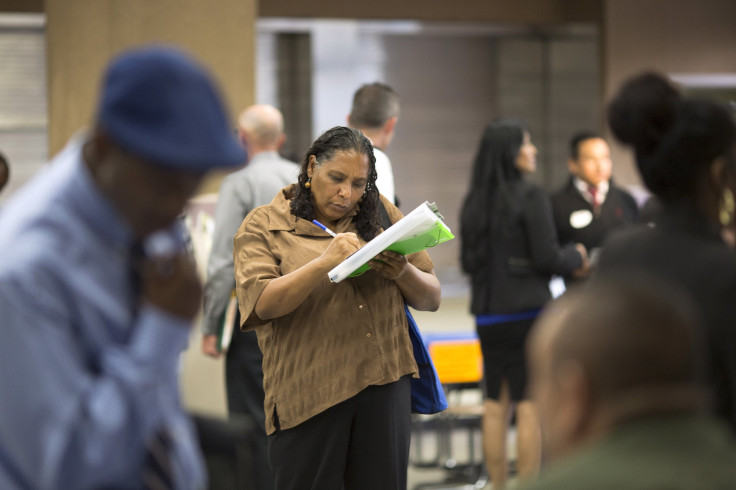US Labor Force Participation Will Continue To Plunge, Drive Down Unemployment Rate: Goldman Sachs Projection

The unemployment rate is falling, but that traditional sign of health for the American worker can be misleading. A larger share of the U.S. population is now out of the labor force than at any time since 1977 -- an era when manufacturing was king and most women didn’t have jobs. As the drop in workforce participation continues to vex economists and policymakers alike, Goldman Sachs economists are projecting the trend will roll on.
Researchers for the investment firm say they expect the current labor force participation rate of 62.4 percent to fall by about a quarter of a percentage point annually in the coming years, reaching 61.8 percent by 2018.
Declining labor force participation, in turn, will help drive down the unemployment rate, according to the research note. Goldman economists expect that number to reach 4.5 percent by 2018, down from its current 5.1 percent. Six years ago, unemployment hit its recessionary peak of 10 percent.
The cause of the decline in labor force participation is a source of much debate. Many economists agree it’s in large part a structural phenomenon, driven by the mass retirement of baby boomers. Others point to its cyclical roots in the Great Recession. Goldman economists also drew attention to the ongoing decline among so-called prime-age workers, noting “the underlying cause is unclear.” Some have pointed to the dearth of decent paying jobs and lack of paid parental leave as contributing factors.
Goldman analyst David Mericle stressed that ongoing labor market slack should weigh on any decision from the Federal Reserve to hike interest rates. “Although our baseline forecast remains for December liftoff,” Mericle wrote, “we therefore still see a solid case for either delaying the normalization yet again or at least moving the funds rate higher only very gradually in the early stages of the normalization process.”
© Copyright IBTimes 2024. All rights reserved.





















